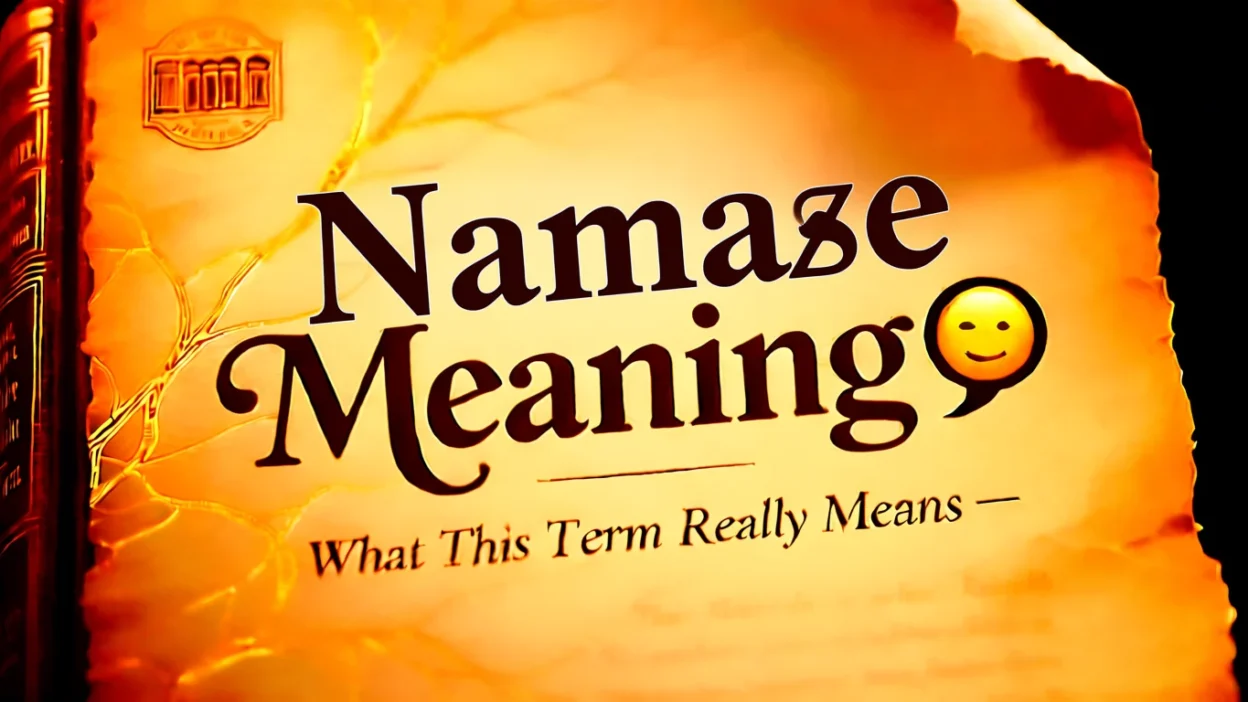“Namaste” is one of the most recognized greetings in the world—but many people don’t know its true meaning. Whether you’ve heard it in yoga class, in Indian culture, or online, “Namaste” carries a deep spiritual message beyond just “hello.”
This guide explains the real meaning of Namaste, how to pronounce it, what it symbolizes, its cultural roots, and when you should or shouldn’t use it.
What Does Namaste Mean?
“Namaste” is a Sanskrit word that translates to:
👉 “I bow to the divine/light within you.”
It is a respectful greeting that recognizes the spiritual essence in another person.
In simple terms, Namaste = Respect + Peace + Connection.
Where Does the Word Namaste Come From?
Namaste originates from Sanskrit, the ancient language of India.
It comes from two words:
- Nama → to bow
- Te → to you
So together: “I bow to you.”
Namaste is most commonly used in:
- India
- Nepal
- Yoga communities worldwide
- Spiritual and meditation practices
How Do You Pronounce Namaste?
Many say it wrong in the West.
The correct pronunciation is:
👉 “Nah-muh-stay”
Not “nah-mah-stay.”
The Gesture That Goes With Namaste
Namaste is usually said with a hand gesture called Anjali Mudra:
- Hands pressed together
- Placed near the heart
- Slight bow of the head
This symbolizes:
- Peace
- Mutual respect
- Gratitude
- Acknowledging the soul within another person
What Does Namaste Mean Spiritually?
In spiritual or yogic tradition, Namaste means:
✨ “The divine in me honors the divine in you.”
✨ “We are connected and equal.”
It carries ideas of:
- Unity
- Love
- Humility
- Compassion
- Oneness of all beings
It’s more than a greeting—it’s a sacred acknowledgment.
Modern Meaning of Namaste
Outside of India, “Namaste” is widely used in:
- Yoga classes
- Wellness circles
- Meditation groups
In these contexts, it often expresses:
- Gratitude
- Peace
- Respect
- Calmness
- Spiritual connection
However, it’s important to remember it is a cultural and spiritual word, not just a trendy slogan.
When Should You Say Namaste?
You can say Namaste in situations like:
✔ Greeting someone
✔ Showing respect
✔ Ending a yoga session
✔ Expressing gratitude
✔ Offering peace or blessing
When Not to Say Namaste
Avoid using it:
✘ As a joke
✘ As a random aesthetic word
✘ Without understanding its meaning
✘ Inappropriately in non-spiritual contexts
Being culturally respectful makes a difference.
Difference Between Namaste & Namaskar
Though similar, they are slightly different:
- Namaste → respectful greeting
- Namaskar → a more formal or reverent greeting
Both express respect, but Namaskar is considered more traditional.
Namaste in Yoga: What It Means
In yoga, the instructor often ends class with:
🧘 “Namaste.”
This means:
- Thank you for sharing your energy
- We honor each other’s presence
- Class ends in peace and unity
It symbolizes the spiritual connection created during practice.
Examples of How to Use Namaste
Here are simple examples:
- “Thank you for the session. Namaste.”
- “Wishing you peace and light—Namaste.”
- “Namaste, how are you?” (in India or Nepal)
FAQs
What does Namaste literally mean?
It literally means “I bow to you.”
Is Namaste a Hindu word?
It comes from Sanskrit and is widely used in Hindu culture but also across Indian and Nepali traditions.
Is Namaste religious or spiritual?
It can be both. It is cultural but often used spiritually in yoga and meditation.
Can anyone say Namaste?
Yes—if used respectfully and with understanding.
Is Namaste the same as hello?
In India, yes—it is commonly used as a polite greeting.
Why do people bow while saying Namaste?
The bow shows respect, humility, and acknowledgment of another person’s inner light.
Final Thoughts
Namaste is more than a greeting—it’s a beautiful expression of respect, peace, and spiritual connection.
When used with sincerity, it carries a powerful meaning: recognizing the divine essence in yourself and others. Whether in yoga, meditation, or daily life, Namaste encourages harmony, unity, and love.



